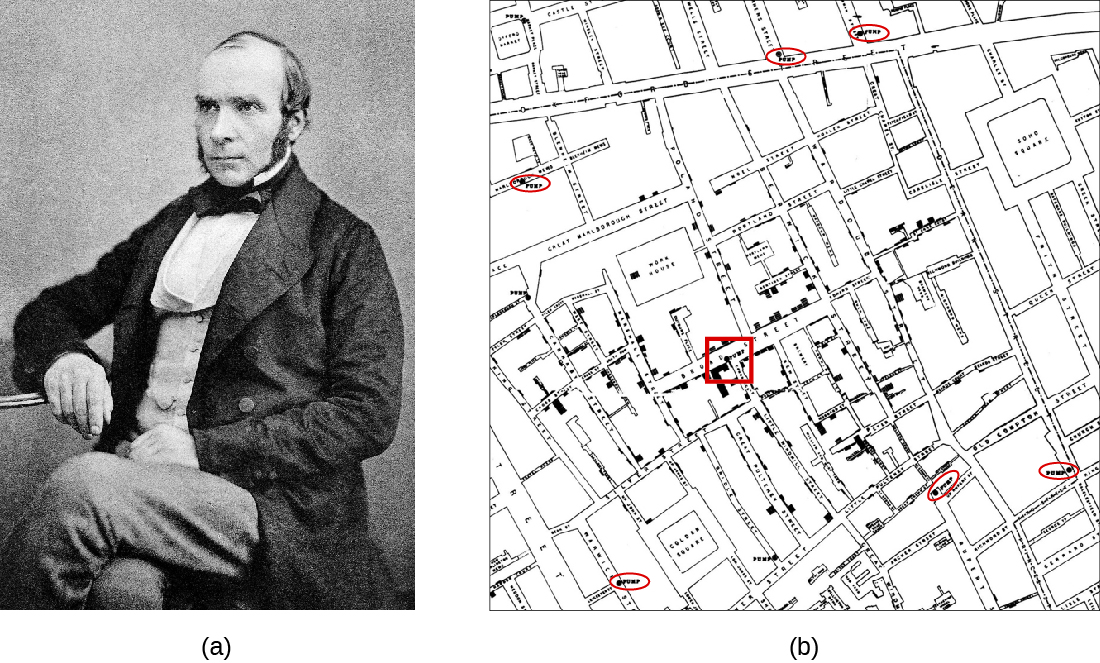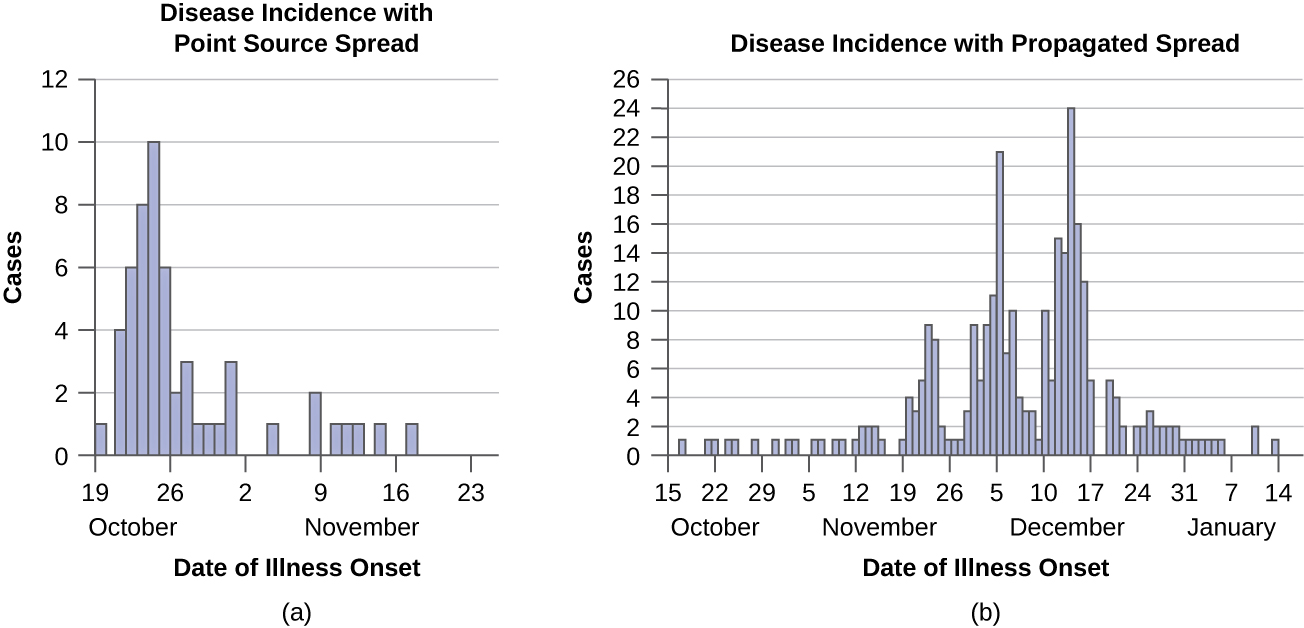| << Chapter < Page | Chapter >> Page > |
Snow’s work illustrated what is referred to today as a common source spread of infectious disease, in which there is a single source for all of the individuals infected. In this case, the single source was the contaminated well below the Broad Street pump. Types of common source spread include point source spread, continuous common source spread, and intermittent common source spread. In point source spread of infectious disease, the common source operates for a short time period—less than the incubation period of the pathogen. An example of point source spread is a single contaminated potato salad at a group picnic. In continuous common source spread , the infection occurs for an extended period of time, longer than the incubation period. An example of continuous common source spread would be the source of London water taken downstream of the city, which was continuously contaminated with sewage from upstream. Finally, with intermittent common source spread , infections occur for a period, stop, and then begin again. This might be seen in infections from a well that was contaminated only after large rainfalls and that cleared itself of contamination after a short period.
In contrast to common source spread, propagated spread occurs through direct or indirect person-to-person contact. With propagated spread, there is no single source for infection; each infected individual becomes a source for one or more subsequent infections. With propagated spread, unless the spread is stopped immediately, infections occur for longer than the incubation period. Although point sources often lead to large-scale but localized outbreaks of short duration, propagated spread typically results in longer duration outbreaks that can vary from small to large, depending on the population and the disease ( [link] ). In addition, because of person-to-person transmission, propagated spread cannot be easily stopped at a single source like point source spread.


Florence Nightingale ’s work is another example of an early epidemiological study. In 1854, Nightingale was part of a contingent of nurses dispatched by the British military to care for wounded soldiers during the Crimean War. Nightingale kept meticulous records regarding the causes of illness and death during the war. Her recordkeeping was a fundamental task of what would later become the science of epidemiology. Her analysis of the data she collected was published in 1858. In this book, she presented monthly frequency data on causes of death in a wedge chart histogram ( [link] ). This graphical presentation of data, unusual at the time, powerfully illustrated that the vast majority of casualties during the war occurred not due to wounds sustained in action but to what Nightingale deemed preventable infectious diseases. Often these diseases occurred because of poor sanitation and lack of access to hospital facilities. Nightingale’s findings led to many reforms in the British military’s system of medical care.

Notification Switch
Would you like to follow the 'Microbiology' conversation and receive update notifications?